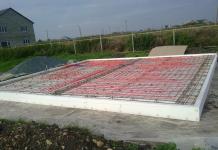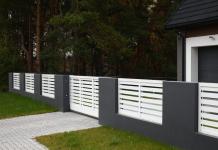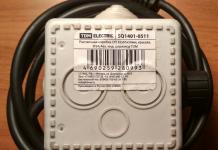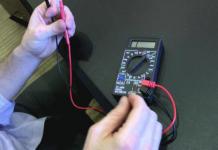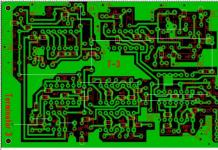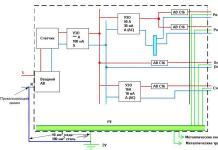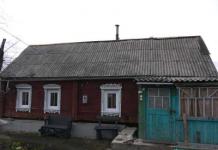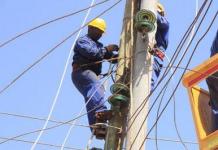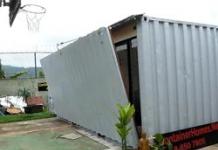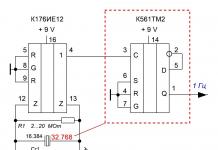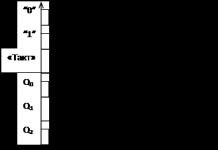It is quite possible to live in a dacha without running water or sewerage. However, its owners, of course, cannot do without such a procedure as connecting a new house to electricity (power lines). Until quite recently, no permits from government agencies were required to connect to the public electricity grid. The owner of a suburban building only needed to install a meter and register it. Today the situation has changed radically.
First steps
So, let's talk in more detail about how the electricity is connected to the house. And first, let's figure out what is necessary to obtain permission for this.
When developing a project for a house, one should draw up, among other things, a detailed scheme for its electrification. One of the mandatory operations in this case should be the calculation of the total power of all those household appliances that are supposed to be used in the future. This will not only allow you to correctly calculate the wiring and parameters of additional equipment, but will also be useful for obtaining permission to connect to the power line network.
Having determined the required power (preferably with some margin), the owner of the house must go to the local energy supply organization and get a contract there. Specifications will be attached to it. The latter are issued in a letter addressed to the director of the supplier company. To obtain an agreement, among other things, you will need to write an application and provide the specialists of the energy supply organization with documents confirming the ownership of the house and land, as well as the plan of the latter.
Specifications
In this appendix to the contract, it is written exactly how the electricity will be connected to the house. This could be, for example, laying a regular new line or a reinforced one, replacing an old one, or perhaps even installing a new substation. The latter may be needed if the building is located very far from the power line itself. That is, in essence, this application outlines the requirements that the home owner must comply with in order to obtain a permit.

Collection of documents
Connecting a country house to electricity begins with the installation of a meter, ASU and a cable to the power line (to the connection point). All these operations, including the selection of equipment, must be carried out in strict accordance with the requirements of the technical specifications. Then the owner of the house will need to contact the local distribution zone to obtain a commissioning certificate. This document is handed over to him after specialists from the organization have checked the connection diagram, inspected the ASU and the metering unit (meter) and sealed the latter.
The owner of the house from the Distribution Zone must also be provided with a document such as the “Act of delimitation of balance sheet ownership”. He determines with the supplying company.
Compliance check
Connecting a country house to electricity (power lines) is possible only after inspection of the meter, ASU and cable by a representative of the energy supply company. If no violations are found, the owner of the building will receive another document - “Act of Compliance with Specifications”. Next, the actual contract for the supply of electricity will be concluded.
Connection procedure
Modern regulations prohibit connecting the supply cable to power lines yourself. Electricity connection to the house is carried out exclusively by employees of the supplying company. Its representatives go to the site and connect the cable prepared by the owner of the house to

Connection methods
Next, we will consider what actions may need to be performed according to the specifications and how exactly. Connecting electricity to a private home can be done in two ways - overhead and underground. The first method is most often used. The fact is that underground connections are more expensive and technically considered more complex. This method is chosen only in exceptional cases.
Air connection
In addition to being cheap, connecting a house to electricity (to power lines) in this way is also easy to install and maintain. It will be completely easy to repair or if necessary. This procedure is performed like this:
- The wire from the power line is inserted into the ASU. An automatic three-pole switch must be installed at the entrance.
- Next, the wire is pulled to the electric meter.
- Then a connection is made to a four-pole automatic circuit breaker.
- In the same part there should be automatic single-pole house lighting switches configured for one phase.
- Separate RCDs must be provided for the lighting and power subsystems.
- For yard lighting and power supply to outbuildings, a separate section is provided in the switchboard.
You can hang the ASU both on the wall of the house from the outside or from the inside, and on the power line pole itself. From it, wires are brought into the building itself, and wiring is done to rooms. The meter can be located both in the ASU itself and in the house on the wall. You should also choose this metering device correctly.

Requirements for the meter
Such a procedure as connecting a country house to electricity should be carried out, as already mentioned, with the selection of equipment that meets the technical conditions. This also applies, of course, to the counter.
According to GOST 6570-96, in residential buildings they must be installed with a working current of at least 30 A and an accuracy class of at least 2.0. Otherwise, the choice of a meter depends solely on the personal preferences of the owner of the house. Of course, if additional parameters are not separately specified in the technical specifications. Sometimes, for example, supply companies require homeowners to install only electric meters. Of course, the technical specifications should indicate the number of required phases of the device. Typically, devices with a current of more than 50 A are chosen for private homes.

Requirements for ASU
So, connecting electricity to a private house is done through an input device. Structurally, it consists of the following elements:
- Input wires, which can be single-phase or three-phase.
- Terminal contacts intended for connecting cables supplying and descending to consumers.
- A switch with which you can turn on and off your home network.
- Automatic protective switches and RCDs. The latter device is responsible for reducing resistance in the event of a power surge in the network.
In modern ASUs, switches are often replaced with three-pole ones. The parameters of the latter are calculated depending on the total power of all possible consumers with a small margin.

Among other things, you will need to install the main grounding bus, to which the neutral wire from the power line should be connected. If desired, you can connect the neutral wire to it from the ASU. Re-grounding of the circuit is also carried out to the GZSh. In this device, the neutral wire is divided into a grounding wire and a zero going into the building.
What should the input cable be like?
When connecting electricity to a private home, you should also choose the right external wire. The requirements for the cable connecting the power line to the building wiring are as follows:
- It must consist of at least four cores. In this case, it is possible to distribute energy over three phases.
- It is best to install copper cable.
- The minimum thickness of the input cable is 4 mm.
- The insulation layer on it must be thick enough and, of course, intact.
- The cable is laid in
- The wire must have certificates from the Ministry of Emergency Situations and Rostest.
Rules for wiring to the house
The cable to the house itself must be laid in compliance with the following recommendations:
- A copper cable cross-section of 4 mm is designed for a length of no more than 25 m. If the house is located further from the power line, it would be best to install intermediate poles.
- Stretch the outer wire so as to prevent it from coming into contact with metal elements (parapets of balconies, fences in the yard, etc.).
- If the wiring will run along the outer wall of the building, it should be located no closer than 75 cm to the windows and one meter to the balcony. In this case, possible vibration of the wires should be taken into account.
- Through the wall, the cable must be carried in an insulating tube.

Rules for connecting electricity to the house by laying the cable underground
Next, let's talk a little about this method of connecting the network at home to power lines. When connecting underground, the cable is led down the pole. At a height of up to three meters from the ground, it must be protected from mechanical damage by a steel pipe. A trench with a depth of 70 cm to 1 m is dug from the pole to the house. When laying cables along the building, the ditch is dug at a distance of at least 70 cm from the foundation of the house. It is strictly forbidden to pull the wire under the buildings. There should be a distance of at least 2 m from the cable to trees, and 75 cm to bushes.
The final stage
After the input cable of the house is connected to the power line by employees of the supply company, commissioning work is carried out aimed at identifying various types of problems. If the latter are available, work is being done to eliminate them. The cable insulation is also carefully inspected.
This is the order in which electricity is connected to the house in Russia. Ukraine recently introduced similar rules on its territory. The owner of the site will also need to first submit a package of necessary documents to the supply company. Next, the home owner will have to purchase a meter and register it with the local distribution zone. The supplier company will have to consider the application within 15 days.
One copy of the contract for the supply of electricity signed by both parties remains in the hands of the home owner, the second - in the supply company.
Connecting electricity to a house or site can take a long time - a minimum of a month and a half, a maximum of up to two years. Although by law you must receive permission within 30 days from the date of application. The actual connection of a site or house to the power grid usually takes up to six months, although it can be connected in a week and a half, or it can take several years. It all depends on the situation, and partly on your persistence.
How to obtain permission to connect electricity
The procedure is the same whether you want to connect a plot of land without a building or to build a permanent residence (private house) or temporary residence (dacha). First, find the address of the energy sales company in your area. It’s easier to do this on the Internet by writing “address of the energy sales campaign” in the search bar and adding the name of the area. There are situations when a site is located on the border of the service areas of two energy sales organizations. Then the application is submitted to the one whose post is closer.
A completed application and a package of documents are sent to the found address. In each region, the list of documents may differ slightly, but basically you will need:
- Application for connection (one of the forms and a sample filling are shown in the photo below).
- A photocopy of the passport, the details of which are indicated in the application.
- A copy of the certificate of ownership.
- Photocopy of TIN.
- A list of all energy-consuming devices that will be connected to the network, indicating their power.
- Load calculation.
- A scale plan of the site and the house, indicating the location of the nearest power poles. If there are pipelines on or near the site (gas, water supply, sewerage, etc.), they must be on the plan. On the plan of the house, indicate the places where the electrical installations will be installed.
Documents can be submitted by mail or in person. If you decide to bring the application in person, go to the reception desk to the secretary, submit the completed application for connection in two copies with all the documents, on the second (it will remain with you) ask to put the date of acceptance of the documents. With this method of submission, you will definitely receive an answer within the legally required 30 days.

You can send an application by mail. In this case, you need to wait approximately 45 days, taking into account the time for mail delivery. If there is no answer, send the request again or go and submit it in person. This doesn’t happen often, but situations like this also occur: a letter was lost somewhere, sorted, etc.
The photo shows an example of a completed application. This is just one example, the forms change at least once or twice a year, so you will need to find the current type of form and fill it out.
What will be the answer
In a letter from Energosbyt you will receive two copies of the contract for connecting to the power grid, signed by representatives of the campaign, and the “Technical conditions for connection” (TU).

The contract specifies the period for supplying electricity to the site. The standard cost there is 6 months. This is the maximum period allotted by law for the completion of all work. In fact, the connection time greatly depends on the distance the pole is from the site. For urban conditions, “nearby” means no more than 300 meters away; for rural areas, less than 500 meters.
If the distance is within these limits, you can be connected faster - in a couple of months. If it’s far away, the period may be much longer than six months. Although after this period you can make claims. Regardless of when your site will be connected to electricity, start construction when it’s convenient for you.
Sometimes the contract contains vague wording without specifying a date. For example, this: “Connection of section No....will be made within 6 months, but subject to modernization or repair (construction) of the step-down transformer substation.” Having signed an agreement containing approximately the same or similar text, you can wait for years until the organization begins construction or modernization of the substation. Only after this, within 6 months, your site can be connected to the power grid.
How much does it cost to install electricity?
According to Resolution No. 129 adopted in 2011, if the power consumption is up to 15 kW, and the distance from the site to the nearest pole is 300 and 500 meters (depending on the type of settlement), the cost of connecting electricity will be 550 rubles.
If the load or distance is greater, the connection is at commercial prices, and these are completely different amounts. For example, in the Moscow and adjacent regions, for connecting 1 kW of power you need to pay from 10 thousand rubles. That is, if you need 16 kW, then it’s 160-200 tr. and more. At commercial rates, the connection fee is calculated even if the distance to the pole in rural areas exceeds 500 meters, and in urban areas - 300 meters.

Therefore, before purchasing a plot, it is advisable to find out where the nearest connected power pole is located. This determines how much money it will take to connect electricity to your house or property. Agree, 550 rubles and hundreds of thousands - the difference is more than noticeable.
Sometimes, even if you need 15 kW and the pole costs within the specified limits, you are told that some work must be paid separately. No one has the right to demand payment from you. Even if an increase in equipment capacity or network upgrade is required. If your requests fit into the conditions specified above, the cost of connecting electricity to a plot of land or a house will be 550 rubles.
What then
After the permit and technical conditions have been received, it is necessary to develop a project for the electrification of the site. In principle, but if the house is large, with utility and technical rooms, with electricity output to the installation area of the pumping station or water supply pump, it is better to order the project from a specialized organization. And the best option is in the energy sales organization where you applied for connection. There will be much fewer problems with acceptance.

If you draw up the project yourself, it will need to be approved by the energy supply organization. If the requirements are met, they will approve it for you; if there are violations, they will indicate what needs to be changed. After making changes, you submit the project again for signature. Only having a completed signed project in hand can you begin to implement it.
Every owner of a plot of land at some point begins to think about connecting electricity to it. This work can be performed not only during the construction of a country house, but also after the building is put into operation.
Even before you start connecting the network, you should find out the power required to fully provide electricity to a country house, calculate the distance at which electrical networks should run in relation to the house, and also find out whether the required network power is available in the area.
List of required documents
If you have firmly decided to supply electricity to your land, then the first thing you should do is you need to fill out an application of a certain sample and contact the organization responsible for maintaining electrical networks at the location of the site.
There you must be given permission to connect electricity. In addition to the application, you will have to prepare copies of documents having signatures of a notary:
- Passport and identification code.
- Documents establishing ownership of the plot and house itself.
- Documents for land and house.
- If a representative applies for assistance, a power of attorney will be required.
- A project for the electrification of a house and site, which must contain information about all energy-consuming devices and their power consumption.
- Construction permit. Necessary for supplying electricity to an area where there are no buildings.
After preparing the above documents, they must be sent by registered mail. It would be useful to attach to them an inventory of the enclosed documents.
In the event that a certain document is not found among the package you sent, the organization is obliged to notify you of this fact no later than 6 days from the date of receipt of the documents.
In some cases, you may be contacted with a demand send originals certain documents among the list above to confirm the specified information. The documents you send will be used by the organization as a basis for drawing up technical conditions, without which it is impossible to supply electricity to the site.
They should reflect the technical characteristics of the input of electricity into a private house: this means single-phase or three-phase cable will be used to supply electricity to the house.
When you have fulfilled all the conditions of this instruction, you will already have every right to begin supplying electricity. An important point is that the technical conditions must be met no later than two years from the date of their preparation.
Sometimes it may happen that, due to the technical conditions of electrical networks, it is impossible to supply electricity to the site. It is also possible that the power of the calculated load exceeds the nominal value of the network.
In such cases, the organization should notify in writing about this fact of the customer of services. However, it is not possible to appeal the decision.
Costs for connecting electricity to the site
Checking compliance with technical conditions will cost the customer about 456 rubles. As for the work of connecting electricity to the house, they cost may vary. The exact amount will be determined by the power of the connected line.
If the power of the network supplied to the site exceeds 15 kW, then the cost of connecting electricity will be 550 rub..
In this case, the work can be carried out provided that the gander for supplying electricity to the site is no more than 300 meters away from the power supply line located in the city, and 500 meters for rural areas.
If you need to install a new electrical network, which involves creating a connection over a longer distance, then here permission required from local authorities.
Video: How to connect electricity to your site
What should be included in an external electrification project for a private home?
 The development of a project for the external electrification of a private house can only begin after the completion of the drawing up of technical specifications by the organization that maintains the electrical networks.
The development of a project for the external electrification of a private house can only begin after the completion of the drawing up of technical specifications by the organization that maintains the electrical networks.
When creating a project, the organization relies as a base for technical specifications electrification of the land plot. To do this kind of work, you will need the following:
- Geodetic or situational plan of the area to which electricity needs to be supplied. This document must contain information regarding the location of overhead and cable lines, as well as communications.
- Electricity metering unit project. It should reflect information about the rated value of the input circuit breaker and the current of the installed voltage limiter.
- Project for connecting a self-supporting insulated cable (SIP) cable supplied from a line support to a metering station, a transformer substation located on the site, or underground cable laying.
- Calculation and development of a grounding project.
- In the case of supplying three-phase networks, the procedure for calculating the power of the transformer, as well as performing calculations of the capacity of the network and the switchgear together with the distribution cabinet type PR.
- A mandatory requirement is to obtain approval for documentation from the organization that is responsible for maintaining electrical networks at the location of the connected house. In some cases it may be necessary to obtain consent from local authorities.
How to conduct electricity to the site
 It must be borne in mind that the responsibility for connecting electricity outside the boundaries of the land falls on the shoulders of the electrical network organization, and the work itself is carried out on the basis of design documentation.
It must be borne in mind that the responsibility for connecting electricity outside the boundaries of the land falls on the shoulders of the electrical network organization, and the work itself is carried out on the basis of design documentation.
Electricity supply to the site must be completed directly by its owner. Costs for installation work may vary. Cost calculation is carried out in each case individually.
The peculiarity of supplying electrical networks to the site is that this work is carried out in several stages. A mandatory requirement is compliance with all technical requirements and approval of the external connection project:
- electricity supply to the site and house;
- confirmation of the operability of devices that will be used to control energy consumption;
- supplying electricity to the house, installing seals on metering devices;
- drawing up a report on the work performed;
- signing a contract for the supply of electricity.
After receiving approval for the supply of electricity, they begin directly to laying cables and distributing electricity in a private house.
Connection rules
 If you plan to supply a single-phase line, then it is advisable to use cable with minimum cross-section 6 mm with copper core or 16 mm with aluminum core. A prerequisite is the presence of reliable insulation of the wires, which should not include damage or kinks.
If you plan to supply a single-phase line, then it is advisable to use cable with minimum cross-section 6 mm with copper core or 16 mm with aluminum core. A prerequisite is the presence of reliable insulation of the wires, which should not include damage or kinks.
The work is based on connecting two cables under the power grid supports, one of which will act as a phase and the other as a zero.
It is important that the cables are positioned at a safe distance relative to each other: if they are connected to a brick wall, then it should be at least 50 mm; in the case of laying to wooden structures of the building, the cables are placed at a distance of 100 mm from each other.
The hole created in the wall through which the cable will be inserted must be sealed using non-combustible materials, for example, cement or concrete mortar. After this, they proceed to connecting the cables to the ASU or energy consumption monitoring device. Here you need to focus directly on the project.
An important point is that when removing the area supplied to electricity relative to the power line supports at a distance of more than 25 meters, it will be necessary to install additional pillars.
It is important to maintain the minimum height from the ground to the cable entry into the wall, which should be 2.75 meters. The optimal height from the cable entry point to the nearest window will be considered to be at least 1.5 meters.
Consequences of independently supplying electricity to the site
 You should not provide electricity to a private house, cottage or property without having permission to carry out such work.
You should not provide electricity to a private house, cottage or property without having permission to carry out such work.
The same applies to increasing the power of an already connected power line or power consumption control device. Such actions are considered illegal and provide for penalties.
If illegally installed line control and distribution devices are identified, they must be dismantled. The legislation also establishes section shutdown employees of the organization on electrical networks from energy consumption.
If a house or site was connected to electricity without permission, then it is very difficult to make this work legal.
The legalization procedure will require much higher expenses than in the case of connecting electricity to the site by the services of a licensed organization in accordance with a plan that takes into account the specific technical conditions.
Alternative electricity
 There are situations when certain circumstances prevent a site from being connected to the power line. In this case, autonomous sources of electricity can become a solution to the problem.
There are situations when certain circumstances prevent a site from being connected to the power line. In this case, autonomous sources of electricity can become a solution to the problem.
As an option we can offer solar collectors, when choosing which you need to pay attention to the power of energy consumed.
If electricity is required exclusively for domestic needs, then you can limit yourself to a power of 6 kW. However, here it is necessary to take into account the fact that the maximum amount of electricity will be provided only from March to October in sunny weather.
With the onset of cloudy days, the amount of electricity generated will noticeably decrease, while at night the site can function exclusively due to energy reserve in the battery if it is connected to the solar system.
Having decided to opt for solar panels, the owner of the land plot should prepare for serious expenses, which will be required to purchase the system components themselves, as well as to carry out the work of installing them. In addition to this, the solar system will require regular maintenance.
Even if you have the necessary experience and know how to conduct electricity to the site, it is still undesirable to do this without permission. In the future this may lead to penalties, which will be followed by a complete blackout of your area.
Therefore, for most land owners it is best use the services design organizations responsible for the maintenance of electrical networks.
Video: Solar panels for the home
Light, water and warmth are fundamental factors in the suitability of housing for permanent residence. Therefore, when it comes to year-round operation of a country house, its uninterrupted supply of electricity comes first. Let's consider the basic rules for connecting to the electrical networks of a private home.
Owners of private houses have many questions related to the procedure for properly connecting their home to centralized power grids. FORUMHOUSE has selected the most private of them. From our material you will learn:
- Where does connection to power grids begin for individuals;
- Proper connection of the house to electricity: what stages does this procedure consist of?
- What documents are required for connecting electricity in private homes?
- How long does it take to register and connect electricity, and how much does it cost?
- What to do if legal regulations for connecting electricity are violated.
The procedure for connecting to the electrical networks of a country house
An individual wants to independently electrify his home or summer cottage with a house, and does not know where to start this procedure.

It will be easier to implement any specific project if we consider a standard situation:
- The power required by the consumer is up to 15 kW;
- A country house or summer cottage is located on “settlement lands”.
Connecting an object to electrical networks consists of the following steps:
- Submitting an application for technological connection (TP) to the power grid organization;
- Receipt and familiarization with the TP Agreement and Technical Conditions (TS) from the electric grid organization;
- Conclusion of an Agreement with the electric grid organization;
- Carrying out electrical installation work on the part of the applicant and the electrical network prescribed by the technical specifications. The electrical network carries out work up to the boundaries of the applicant’s land plot. The applicant (at his own expense) performs the work prescribed by the technical specifications within the boundaries of his site;
- Connection to the power grid and supply of voltage (after the power grid has verified the requirements for fulfilling the specifications) to the applicant’s power receiving devices (EPD);
- Signing documents on TP.

This is a standard scheme, according to which a private home is connected to the power grid. It defines the general algorithm of actions for the electrification of a land plot. However, there are several nuances that you need to know about before you start collecting the necessary documents to connect home electricity.
First of all, it is necessary to find out the availability of electrical networks of the required voltage, and the distance to them from the border of the site. This point is worth paying attention to.

FORUMHOUSE user Natalia Derkunskaya, forum nickname Stitching.

Natachka User FORUMHOUSE
The distance from the connection object to the networks of the required voltage is a factor that directly affects the timing and price associated with the electrification of a house or site.

If the distance (in a straight line) from the boundary of the site to the nearest electrical network does not exceed:
- 300 meters - in the city;
- 500 meters – in rural areas.
If the required power, taking into account all previously connected energy consumers, does not exceed 15 kilowatts, then in this case, according to existing standards, the price for connection should not exceed 550 rubles.
You have the right to request information about where the necessary networks are located from the local administration by making an appropriate request, and the response to this request is provided free of charge.
In the amount of 550 rubles. includes:
- Fee for the issuance of technical specifications;
- TP costs.
Energy supply company ( subject to the above requirements for distance and required power) should not require additional payment from the applicant for laying an electrical network to the border of his property.

Proper electrical connection in a private home: list of documents
The list of documents required for submission to the RES for many becomes a real stumbling block in the issue of electrification, and on FORUMHOUSE discussions often arise about the mutual rights and responsibilities of the parties, such as “does the RES project have the right to demand when connecting a private house to 220V and 5 kW.”
The standard list of documents required to enter into an agreement with the RES includes:
- An application indicating:
- Full name of the applicant;
- Passport details;
- Location of the connection object - the actual address of the site and (if any) house number;
- Project of the site (scale diagram) indicating the location of connected energy consumers. It is also necessary to indicate their number, the power of each and the total power;
- Copies of documents confirming ownership of a house or land.
The exact list of required documents and the procedure for submitting them should be clarified with a specific electricity sales company, because requirements in Moscow and other cities and regions, depending on local conditions, may vary slightly.
How to connect electricity to your home: deadlines and delays
Based on the application submitted by the applicant, within a month from the date of its receipt, the electric grid company issues:
- TP agreement;
- Technical conditions.
If the application does not contain all the necessary information or does not include any documents, the power grid has the right to notify the applicant within 6 working days.

Upon receipt of the Agreement and technical specifications, the applicant can sign them within a month.
Therefore, it would be correct to first carefully familiarize yourself with the requirements of the electrical network and only then put your signature. The procedure is such that if the applicant does not agree with the terms of the Agreement and the technical specifications, then within a month (from the date of receipt of the documents) he can send a reasoned refusal (motor refusal) to the power grid.

The power grid has no more than 6 months to make a technological connection to the connection point. The period is counted from the moment of conclusion of the Agreement between the applicant and the power grid. She can't connect any longer.
How to connect to electrical networks - pressure levers.
The law regulates the supply of electricity up to 15 kW to the border of the site. Despite these clearly defined standards for connecting electricity, it happens that after submitting an application for technological connection, the applicant is faced with a number of difficulties. Namely:
- The power grid does not issue agreements for TP and specifications;
- The power grid does not meet the deadlines allotted to it by law for technological connection.

To be able to defend your rights, you need to know that:
- According to current regulations, the electrical network is required to extend a line of the required voltage no further than 25 meters from the border of the applicant’s property;
- The procedure for connecting to the networks of a network organization is regulated by the Rules for the technological connection of power receiving devices. These rules are approved by the Government of the Russian Federation. Resolution No. 861 of December 27, 2004;
- Because Network organizations are subjects of a natural monopoly, then they fall under the law on protection from competition. Federal Law No. 135;
- The activities of a network organization are regulated, and violations of the law are suppressed by antimonopoly authorities, who can impose a fine on this organization.

How to connect electricity to a house, cottage or plot (how to join the electrical grid) or “electricity online”.
All those who decided to build a private residential building in the city or in the country are faced with the problem of connecting the newly built house to the power grid. Almost all home owners have encountered this problem: it is unclear where to go and what needs to be done, how much electricity costs, and also who connects it.
In this article, we offer instructions for connecting a newly built residential building to the electrical grid and connecting the electricity.
So, what actions does the owner of a house or cottage need to perform in order to connect electricity to the house?
First, we propose to consider the issue of connecting to power grids. private residential building, whose owner is not member horticultural non-profit partnership(SNT or DNT).
1. You need to contact the network organization (whose organization owns the power lines), whose electrical networks are located at the shortest distance from the boundaries of your site.
2. A list of documents must be submitted to this network organization:
- application for technological connection (an example of an application is given in the section "Consumer's Handbook");
- a plan for the location of your power receiving devices (a draft power supply diagram - you can order the simplest and most inexpensive project from any organization). It is worth noting that not all network organizations require a power supply project, so the need for its preparation must be clarified when submitting an application for technological connection;
- copies of documents that confirm the ownership of the house and land;
- power of attorney for the representative, if the application for connection to the electrical networks is submitted by the representative.
Requirements from the network organization to provide any other documents - illegal.
3. After this, the network organization will issue technical conditions that must be fulfilled by the consumer within the boundaries of his site. The period of validity of the technical specifications for the applicant cannot be less than 2 years.
4. At his site, the consumer carries out the work provided for by the technical conditions independently. All work up to the consumer site (construction of power lines, etc.) is performed by the network organization!!!
5. After the consumer and the network organization have fulfilled the technical conditions, representatives of the network organization carry out an inspection and actual connection to the power grid.
6. Cost of technological connection (amount of payment for technological connection). If the distance from the boundaries of the consumer’s property to the nearest electrical networks of the network organization is less than 300 m for the city and less than 500 m for the village, then the cost of connecting electricity to the house (the price of connecting to the electrical networks) cannot be above 550 rubles for 15 kW connected power - or no more than 550 rubles for connection. (power can be calculated using data on the consumption of electrical appliances, which is posted on the portal pages). If the distance is greater than specified, then the cost of connecting to electrical networks is calculated on the basis of the tariff, which is established by the local executive authority in the field of state regulation of tariffs (Regional Tariff Service or Regional Energy Commission).
7. The period of connection to the power grid should not exceed:
- 6 months if the electrical networks of the network organization are located more than 300 m from the border of the applicant’s property (for a city) or 500 m for a village
- 1 year if the electrical networks of the network organization are located further than the above distance.
8. After completing the procedure for technological connection (connection to electrical networks), the network organization draws up and transfers to the consumer an act of delimitation of the balance sheet ownership of the parties and the operational responsibilities of the parties and an act of technological connection. All these documents are issued for free.
We now propose to consider the case when it is necessary connect electricity to the cottage.
If you are a member of a horticultural non-profit partnership and the members of the horticultural partnership at the general meeting decided that the members of SNT express a desire for “dacha electricity” to exist in SNT, i.e. make a decision to connect SNT to electricity, then the authorized representative from SNT, in the interests of SNT members, carries out the following actions:
1. Submits the following documents for technological connection to electrical networks to the network company:
- application for connection to the power grid;
- plan - layout of power receivers of SNT members
- copies of documents that confirm ownership of houses and plots of SNT members;
- a copy of the decision of the general meeting of SNT members on the decision made to conclude an agreement on technological connection with the grid organization;
- a copy of the SNT charter.
2. After that, the network organization will issue within 30 days draft technological connection agreement, technical conditions that must be fulfilled by the consumer within the boundaries of his site. The period of validity of the technical specifications for the applicant cannot be less than 2 years.
3. If all the terms of the technological connection agreement comply with the norms of current legislation, then the chairman of the SNT signs it within 30 days and returns one copy to the network organization. If the contract does not comply with the norms, then it is necessary to send a reasoned refusal to sign it to the network organization, the network organization within 5 days must correct the comments.
4. After signing the agreement, SNT carries out the implementation of technical conditions (construction at the expense of SNT members on its territory of power lines, transformer substation, etc.), and the network company organizes implementation to the borders of SNT.
5. How much does it cost to connect electricity to SNT. The tariff for technological connection for SNT is no more than 550 rubles for connecting one section, provided that each member needs to connect no more than 15 kW. However, for each member of the SNT, the cost of connecting to the power grid will be increased by the amount of the cost of building a power line within the SNT (the network company is not obliged to build it).
6. The period of technological connection should be no more than:
- 6 months, if the total connected power of all members of the SNT is no more than 100 kW and the distance from the borders of the SNT to the objects of the network organization does not exceed 300 m for the city and 500 m for the countryside;
- no more than 1 year, if the above conditions are not met and the total connected power does not exceed 750 kVA;
- no more than 2 years if the total connected power exceeds 750 kVA. In this case, the investment program of the network organization may provide for other deadlines for completing the technological connection, but not more than 4 years.
7. After completing the procedure for technological connection (connection to electrical networks), the network organization draws up and transfers to the consumer an act of delimitation of the balance sheet ownership of the parties and the operational responsibilities of the parties and an act of technological connection. All these documents are issued for free.
Important!
If the SNT members at the general meeting of the SNT members do not make a decision on connecting dachas to the power grid or a compromise cannot be reached between the SNT members on the issues of connection and the cost of building a power line within the SNT, then the dacha owner can connect electricity to the dacha independently. In this case, he must act in accordance with the procedure described above, as for cases of connecting electricity to the house.
So, this article provides a list of necessary actions, as well as information about the payment for electricity, methods of connecting to electricity for consumers who want to connect their house, cottage, plot to electricity, i.e. carry out activities that some people incorrectly call “connecting to electricity” or “installing electricity”.


